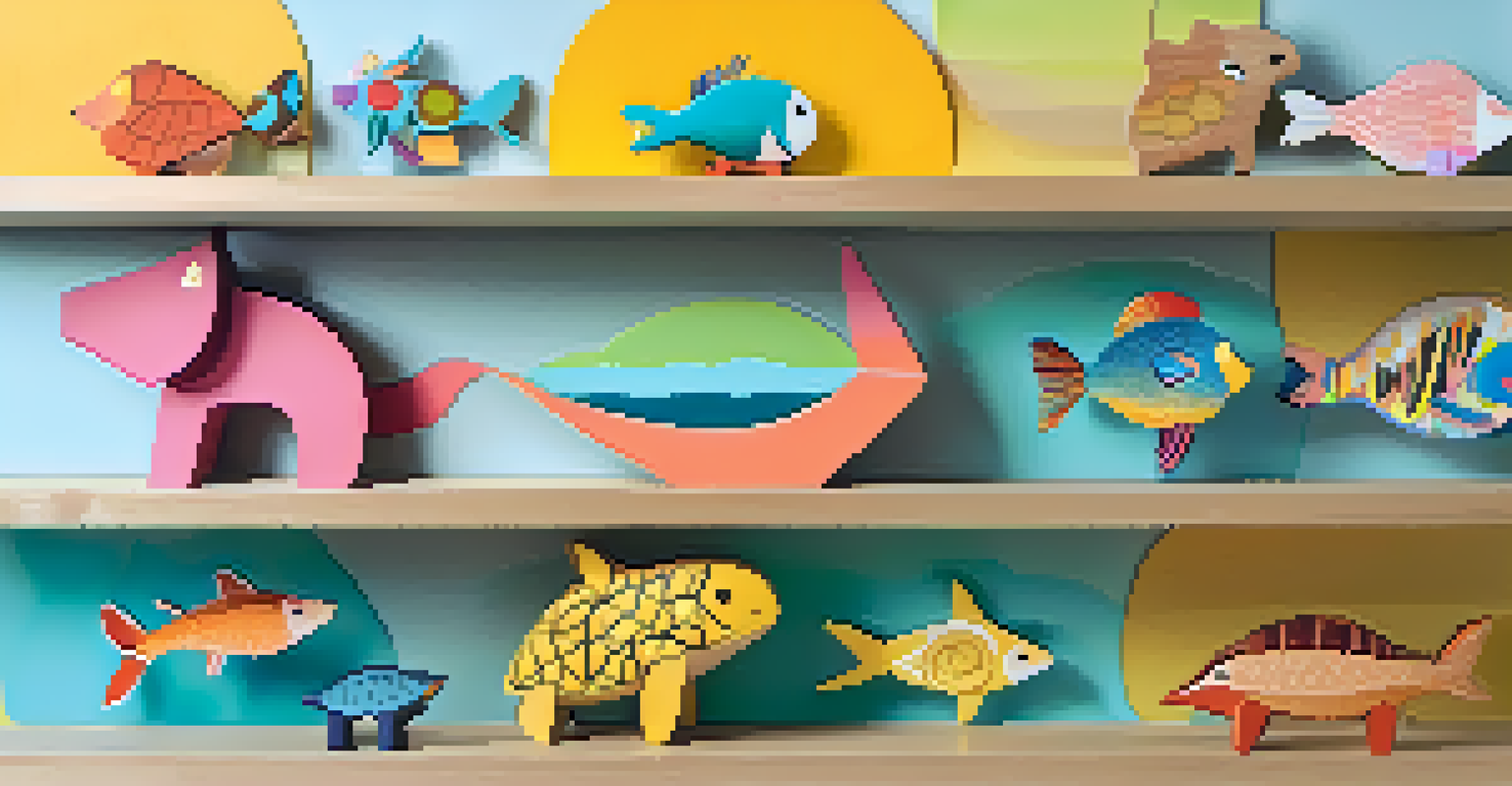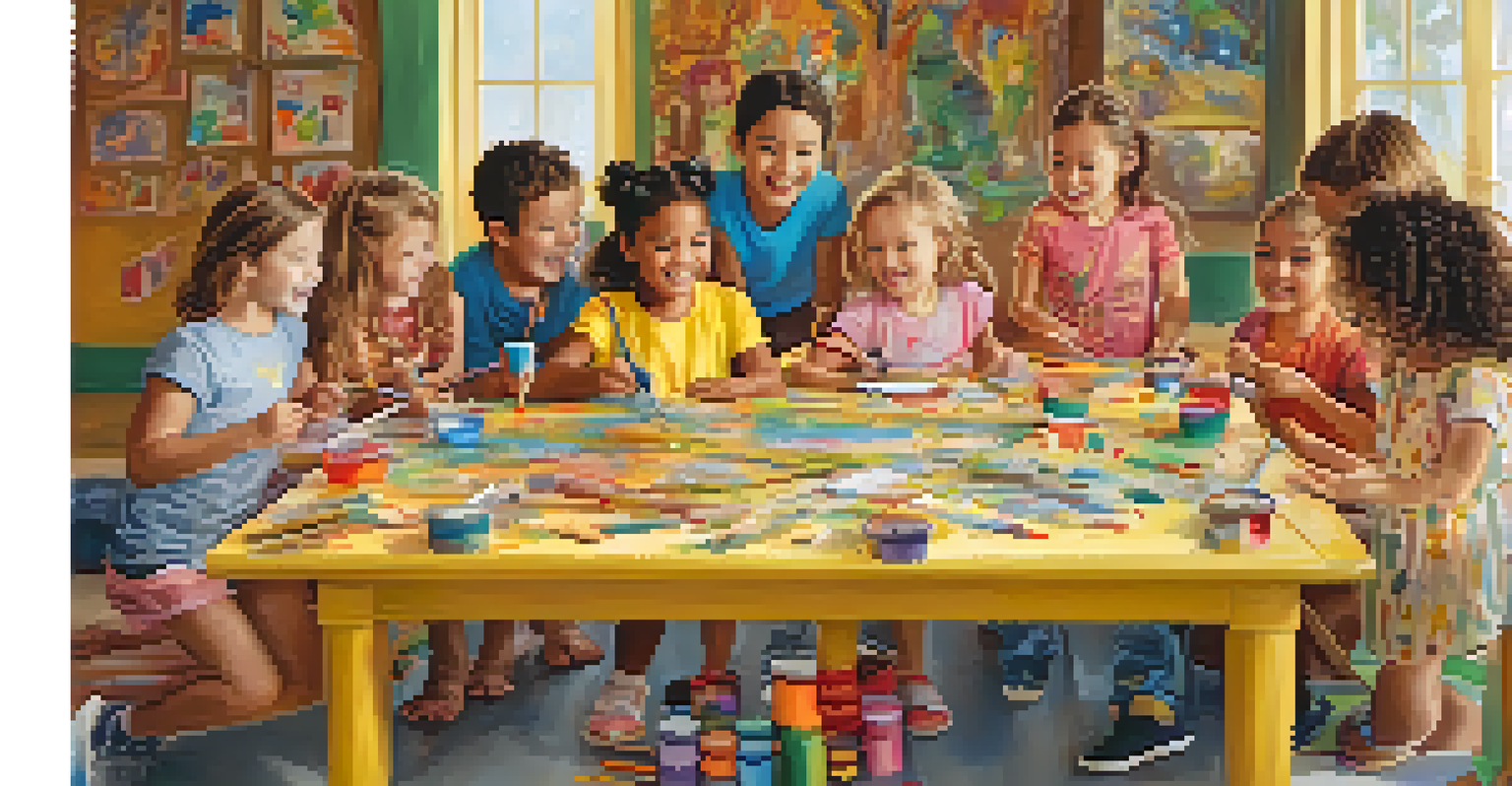Creating Animal Figures: A Fun Carving Project for Kids

Why Carving Animal Figures is a Great Activity for Kids
Carving animal figures is not just a fun craft; it's a fantastic way for kids to express their creativity. Kids love animals, and this project allows them to bring their favorite creatures to life using simple carving techniques. Engaging in such activities can also help improve their fine motor skills and hand-eye coordination.
Creativity is intelligence having fun.
Moreover, working with their hands fosters a sense of achievement. Every finished figure is a tangible reward for their effort, boosting their confidence. As they see their creations take shape, they'll learn about patience and persistence, important life skills that extend beyond crafting.
Additionally, this activity promotes bonding time with family or friends. Whether it's a parent helping out or a group of kids working together, carving can be a shared experience filled with laughter and learning. It’s a wonderful way to create lasting memories while enjoying a hands-on project.
Choosing the Right Materials for Carving
Selecting the right materials is crucial for a successful carving project. Start with soft woods like basswood or pine, as they are easier for kids to carve compared to harder types. Also, these materials are often readily available at craft stores and are relatively inexpensive, making them perfect for beginners.

In addition to wood, gather some basic tools. Safety is paramount, so consider kid-friendly carving tools or even a safety knife. Make sure to supervise the kids closely, especially if they are using sharper tools, to ensure they have a safe experience while learning.
Carving Boosts Creativity and Skills
Engaging in carving activities allows kids to express their creativity while enhancing fine motor skills and hand-eye coordination.
Don’t forget to have some sandpaper on hand! After carving, kids can smooth out their figures, giving them a polished look. This final touch allows them to see the transformation from a rough piece of wood to a charming animal figure, adding to their sense of accomplishment.
Basic Techniques for Carving Animal Figures
Before diving into carving, it’s helpful to teach kids some basic techniques. Start with simple shapes, encouraging them to create a basic outline of the animal they wish to carve. Using a pencil, they can sketch their design directly onto the wood, making it easier to follow during the carving process.
The best way to predict the future is to create it.
Next, demonstrate how to make shallow cuts to remove larger pieces of wood before refining the details. Emphasize the importance of carving away from their body to ensure safety. This basic technique is the foundation for creating more intricate designs as they gain confidence.
Finally, remind them that mistakes are part of the learning process. If a cut doesn’t go as planned, it can be an opportunity to adapt their design. Encouraging a flexible mindset will help them embrace creativity and problem-solving while having fun.
Ideas for Animal Figures to Carve
Inspiration can be found in the animal kingdom! Start with simple figures like a fish, a cat, or even a bird. These shapes are easy to carve and allow kids to experiment with different styles and features. The more familiar the animal, the more excited they will be to see their creation come to life.
As they become more comfortable with carving, encourage them to try more complex animals like a turtle, a dog, or even a whimsical unicorn! Each animal presents unique features, helping kids understand proportions and details. This exploration will not only enhance their skills but also keep their interest levels high.
Safety is Key in Carving Projects
Supervision and proper tool handling are essential to ensure a safe carving experience for kids.
You could also introduce themed collections, such as jungle animals or farmyard friends. These themed projects can spark conversations about animal characteristics, habitats, and much more, turning crafting time into a mini-educational experience.
Finishing Touches: Painting and Decorating
Once the carving is complete, it’s time for the fun part: decorating! Kids can unleash their creativity with paints, markers, or even natural dyes. This is the stage where their personalities can shine, as they choose colors and patterns that reflect their style.
Encourage them to think about the animal’s natural colors or to go wild with their imagination! Decorating can also include adding details like googly eyes, feathers, or other embellishments, transforming their simple carvings into unique masterpieces.
Moreover, this stage allows for discussions about the importance of art in expressing feelings and ideas. By decorating their figures, kids can not only showcase their artistic flair but also create stories around their animals, further enhancing their imaginative play.
Safety Tips for Carving with Kids
While carving can be a delightful activity, safety should always come first. Ensure that kids understand the importance of handling tools properly, emphasizing the need to keep their hands and fingers away from the cutting edge. A few simple rules can go a long way in preventing accidents.
Supervision is key. Always have an adult present when kids are using carving tools, regardless of their experience level. This guidance not only ensures safety but also provides an opportunity for learning and sharing techniques.
Display and Share Creations Proudly
Kids can build confidence and pride by showcasing their finished animal figures through exhibitions and social media.
Finally, encourage kids to wear protective gear, like gloves or safety goggles, if necessary. Creating a safe workspace free of distractions will help them focus on their project and minimize risks, allowing everyone to enjoy the carving experience.
Sharing and Displaying Finished Animal Figures
After all the hard work, it's time to show off those amazing creations! Kids can host a mini-exhibition at home, displaying their animal figures for family and friends to admire. This not only boosts their confidence but also gives them a sense of pride in their craftsmanship.
Encourage them to share their projects on social media or in a school show-and-tell. Sharing their process through pictures or stories can inspire other kids to try carving, creating a ripple effect of creativity and excitement.

Additionally, consider finding a special spot in the home to display their finished figures. This could be a shelf, a desk, or even a dedicated 'art corner.' Having a dedicated space for their masterpieces reinforces their efforts and encourages them to continue exploring their artistic talents.